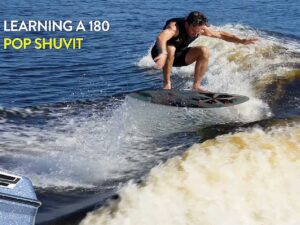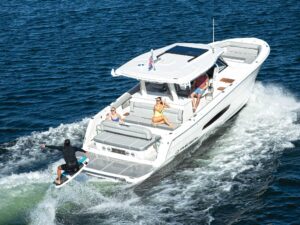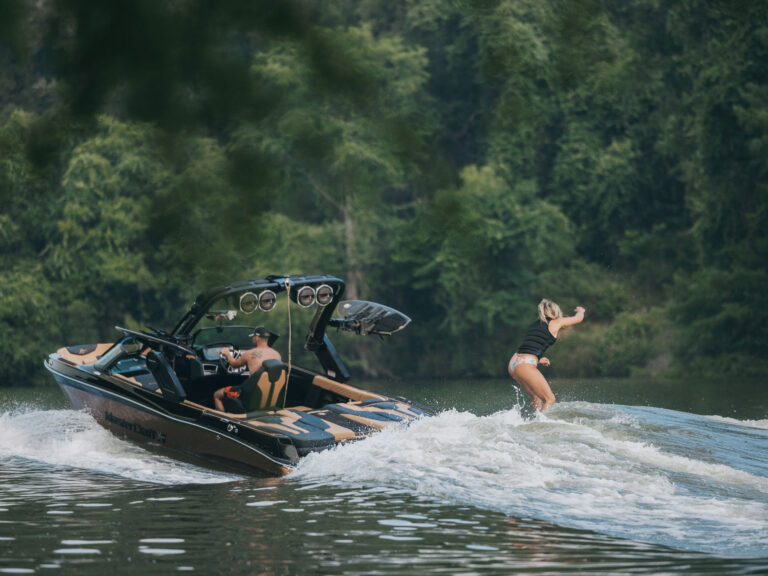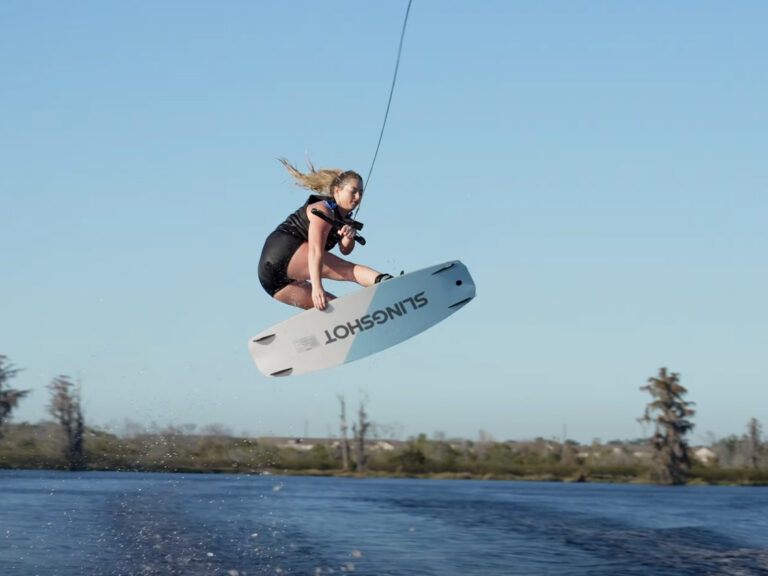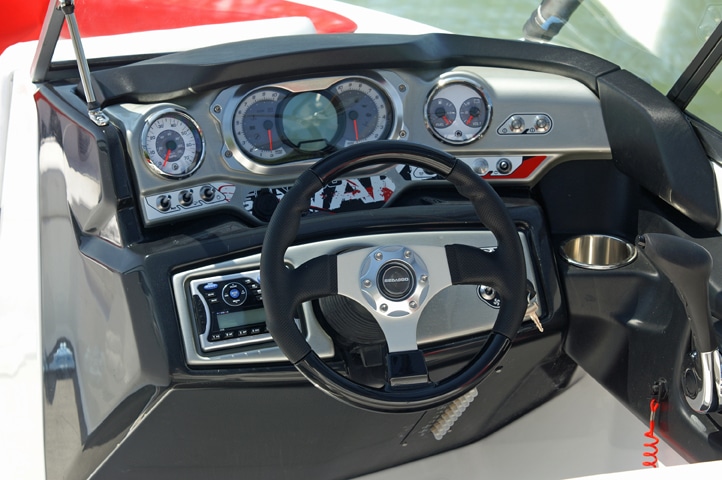
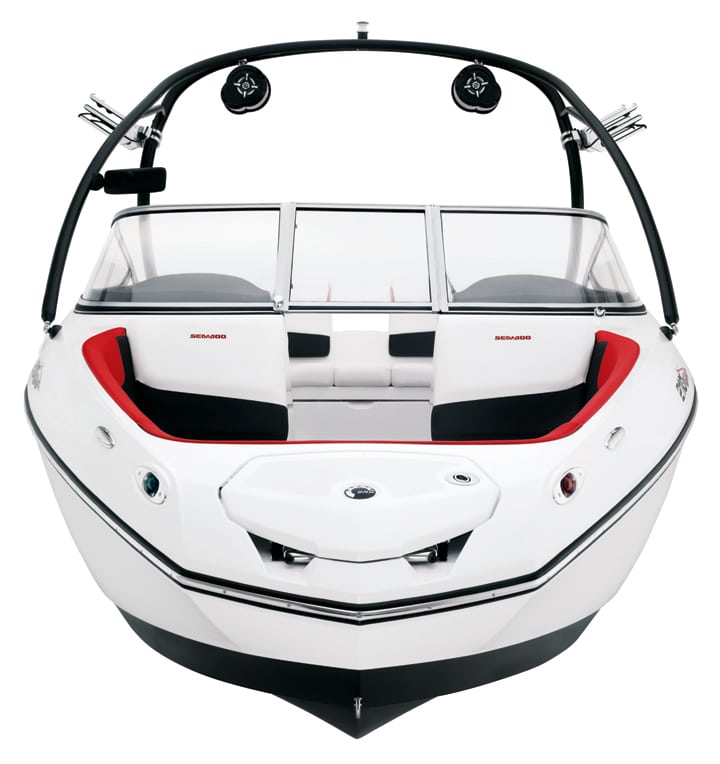
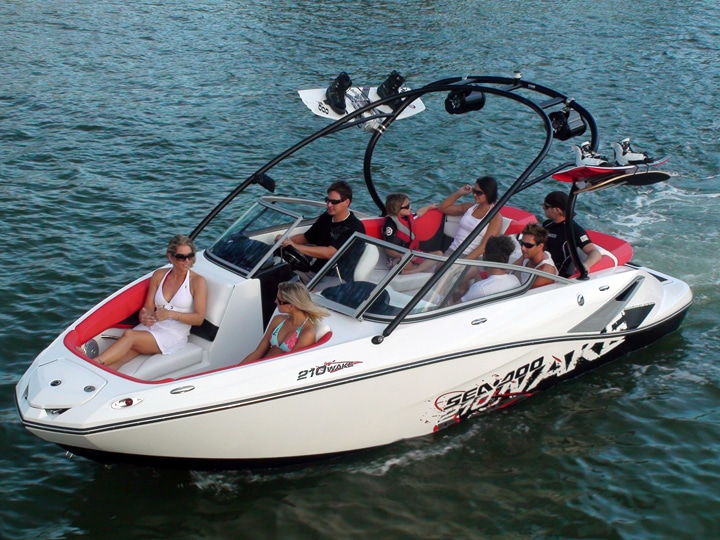
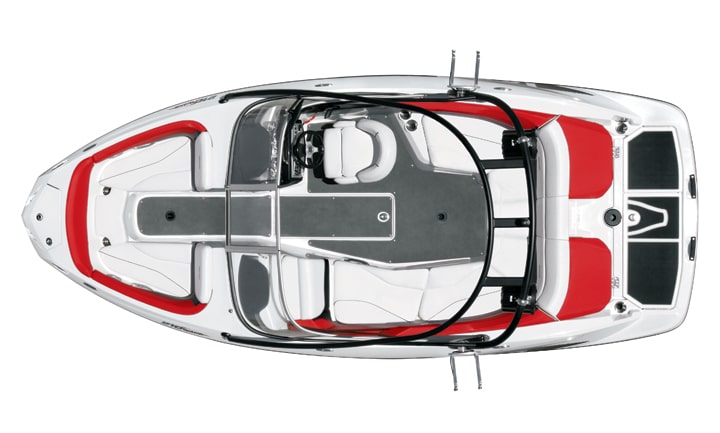
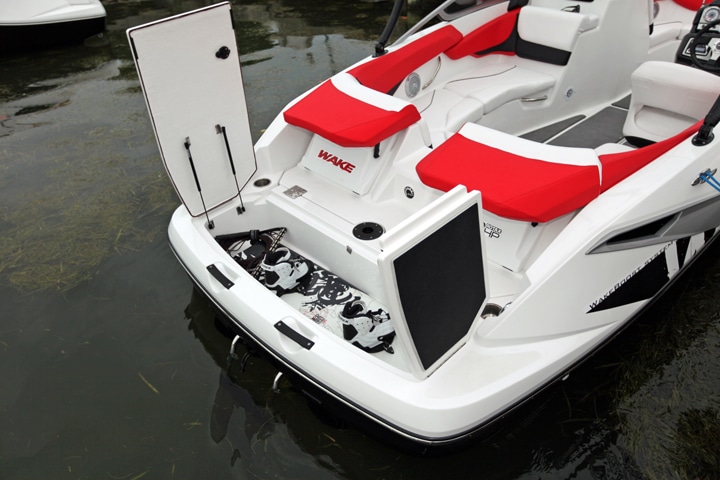
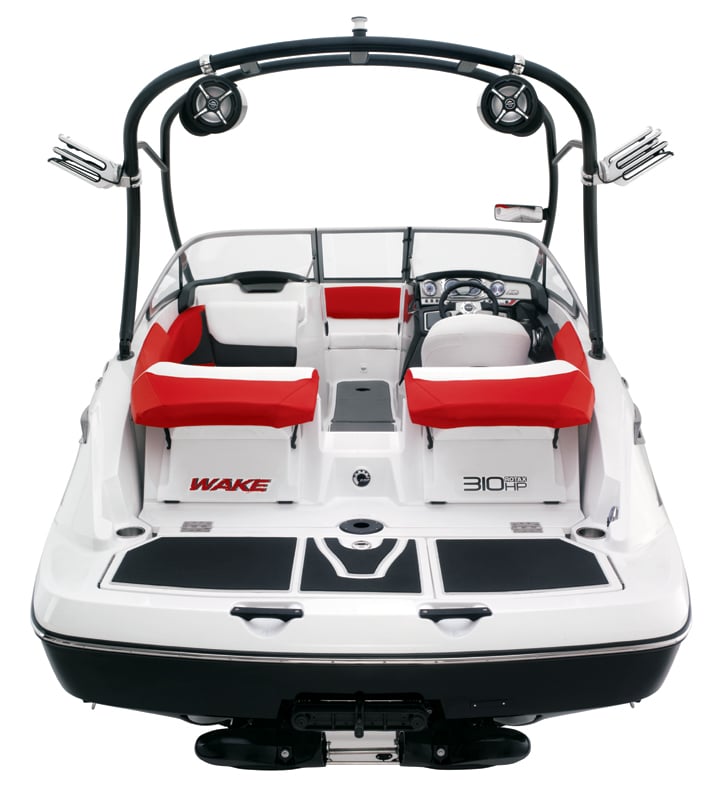
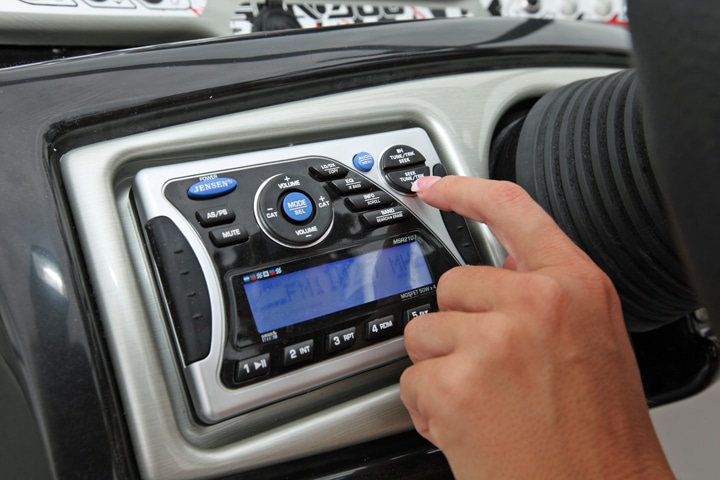
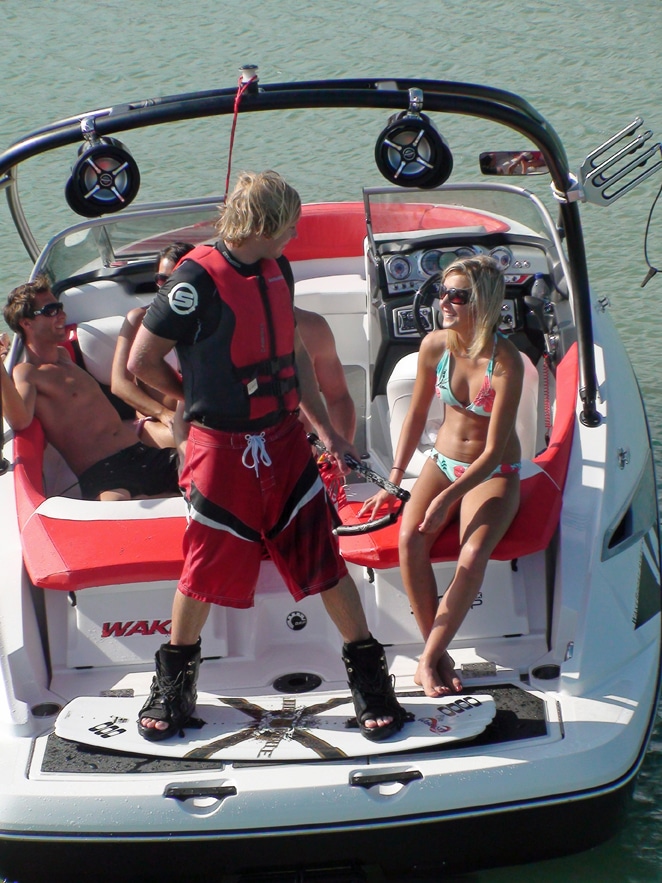
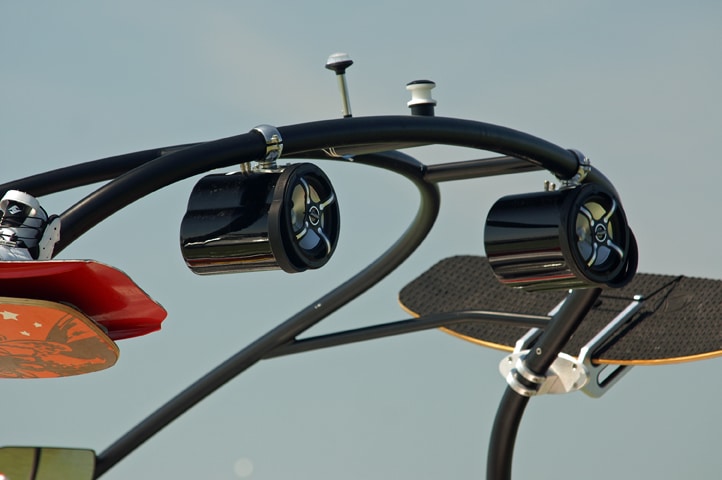
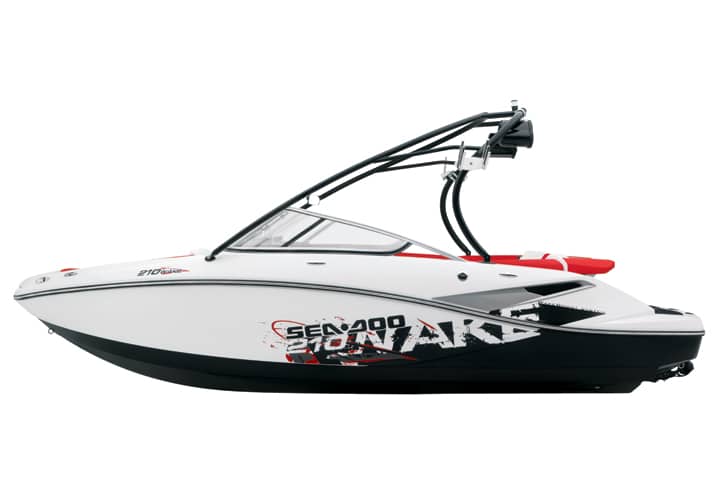
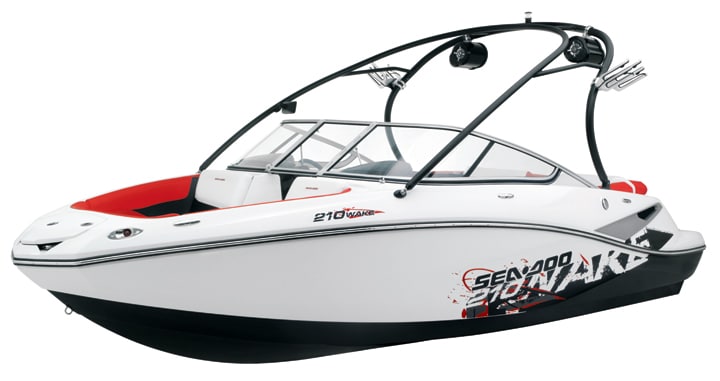
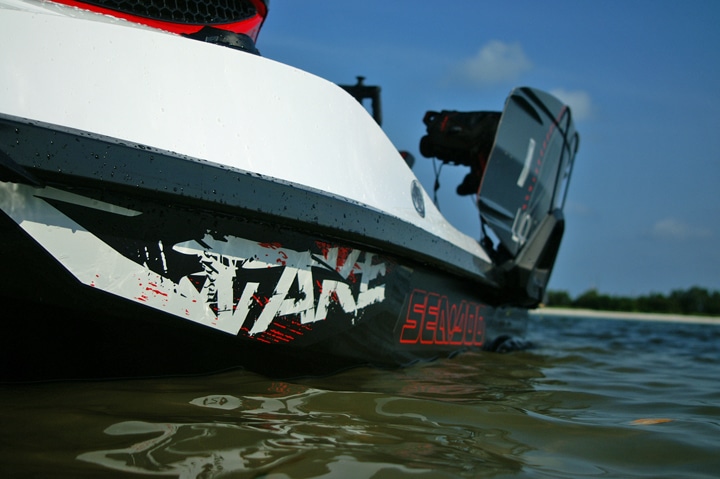
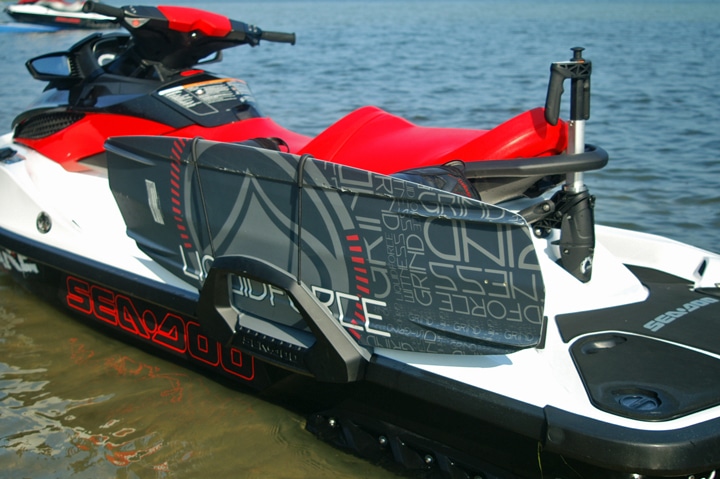
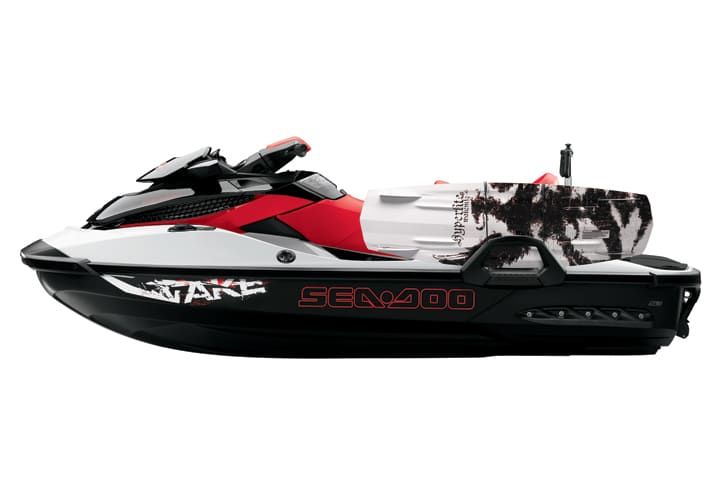
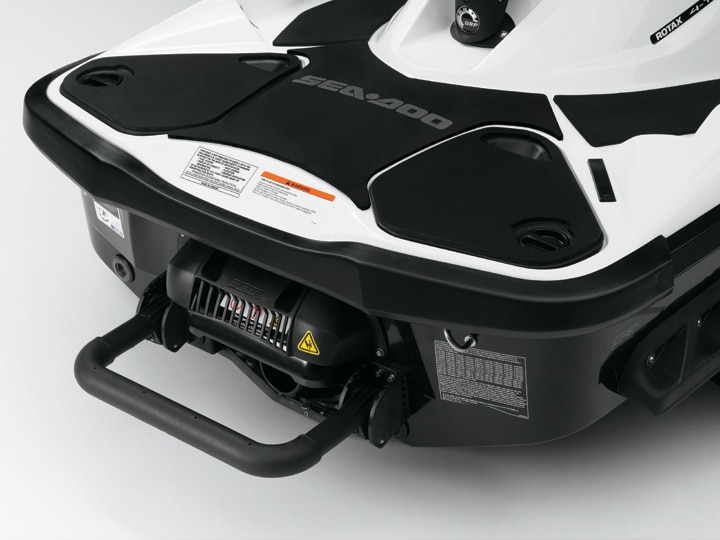
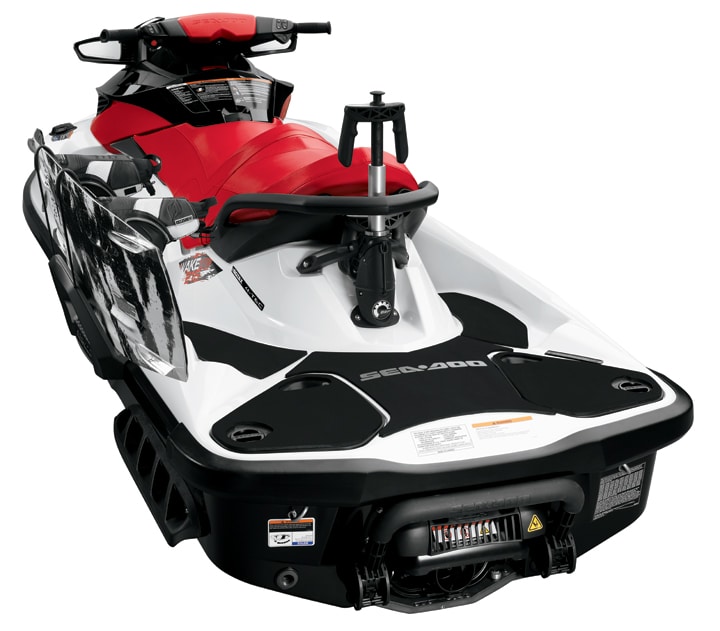
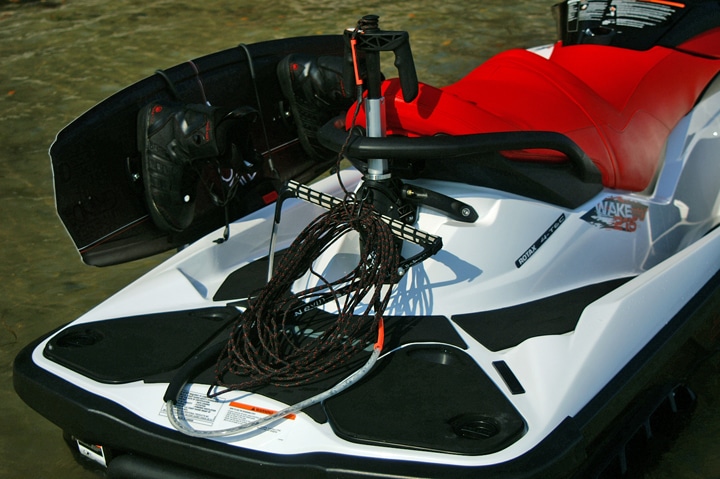
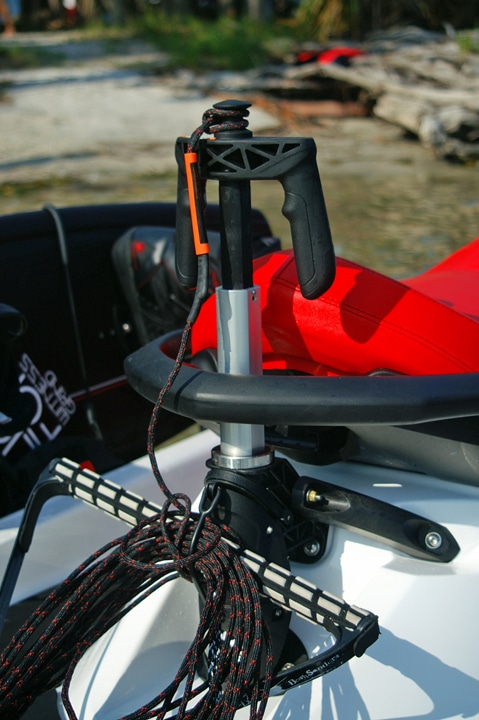
Last week, I got a first look at Sea-Doo’s two brand-new wake-specific rides — the Wake Pro 215 PWC and 210 Wake boat —on the Potomac River just outside Washington, D.C. Both were models of Sea-Doo innovation and included a host of driver- and rider-friendly innovations. Here’s a sneak peek at what to expect from Sea-Doo in 2010. — Luke Woodling
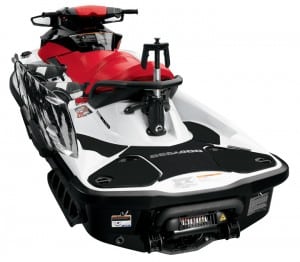
Sea-Doo Wake Pro 215 PWC
Sea-Doo’s original wake-specific PWC (now called the Wake 155) was the go-to tow for the Byerly Toe Jam Tour as well as Nike 6.0 riders Nick Taylor, Ben Horan and Matt Manzari, so I was stoked to test-drive the new bigger, badder Wake Pro 215. It didn’t disappoint. The 215 retains the original Wake model’s rider-friendly retractable pylon, removable board racks and re-boarding step, but ups the ante with a larger 215-horsepower Rotax engine and tons of new tech. My favorite was Sea-Doo’s iBR on-water braking system, which was a revelation when it debuted last year on the company’s high-performance GTX Limited iS. A first for PWCs, iBR allows the driver not only to brake, reducing the stopping distance by half, according to Sea-Doo, but also reverse the craft. The system makes the 215 safer and easier to manage, helping the driver deliver hassle-free rider pick-ups and starts. Better yet, iBR is incredibly user-friendly. I mastered using the brake lever, which is located on the left handlebar, within minutes. Another favorite feature is the new Ski Mode, which teams with the 215’s GPS-based cruise control to deliver consistent pulls. Ski Mode lets the driver select one of five pre-set acceleration profiles. In other words, the driver selects the rider’s favorite speed, hits the throttle and forgets about it. This comes in particularly handy when picking up fall-prone riders, because the driver doesn’t have to reset the cruising speed after every drop.
**Wake Pro 215 Specs
Length: 11’7″
**Width: 4′
Rider capacity: 3
Fuel capacity: 15.9 gal.
Storage capacity: 52 gal.
Engine: 215-hp supercharged intercooled Rotax 4-Tec****
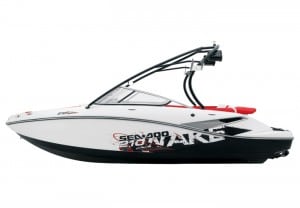
Sea-Doo 210 Wake boat
This new 21-footer won’t go into production until early 2010, so I wasn’t able to test drive the 210, but I did get to check out a prototype first hand. Here are some of the features that stood out:
****Upgraded ballast**
**The 210’s dual ballast tanks hold up to 600 pounds and are controlled from the cockpit. Since they’re hard tanks instead of bags, Sea-Doo was able to get a surprising 57 cubic feet of storage into the boat’s compact 20’6″ frame.****
****Tower system**
**Sea-Doo upgraded to a sturdier, more substantial tower for 2010. The black, swooped-back design comes outfitted with board racks and four Infiniti speakers.****
******Transat seats****
****These new rear-facing lounge seats fold out from under the sun pad, providing multiple seating options for passengers. The sundeck area also features a plug-in table, cup holders, speakers, and stereo remote.******
********Ski Mode********
The same system that’s on the Wake Pro 215, Ski Mode gives the 210 driver five pre-selected acceleration profiles to choose from.
Swim platform storage
The coolest bit of storage is the lockable compartment located underneath the swim platform, which is big enough to fit a wakeboard and bindings. Since its wet storage, you could also fill it with water for a little extra ballast.
210 Wake Specs
Length: 20’6″
**Beam: 8’6″
Seating capacity: 10
Fuel capacity: 44 gallons
Engine: 310-hp or 430-hp Rotax 1503 4-Tec**
The Bonus:
I also got a sneak peek at Sea-Doo’s next-generation PWC trailer, the Advanced Tec iCatch I, and was really impressed with its user-friendly function. The new iCatch and release system makes loading and launching your PWC easier than ever before by eliminating the traditional winch and tackle process. Check out this video to see just how easy it is.
